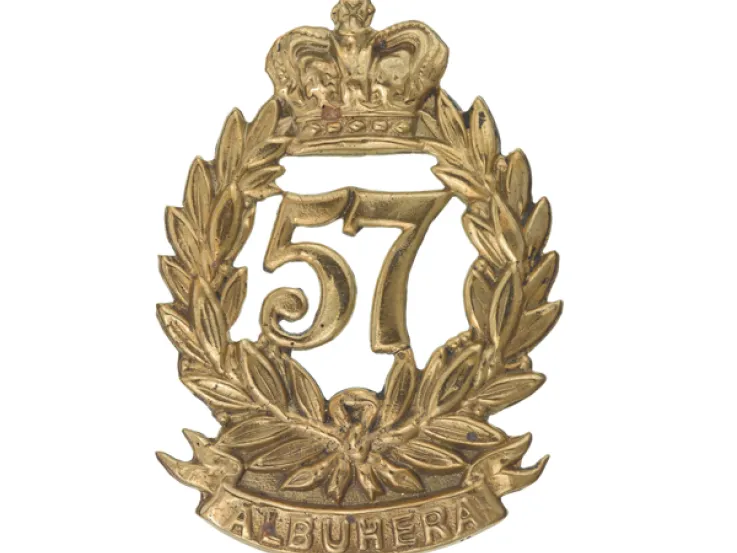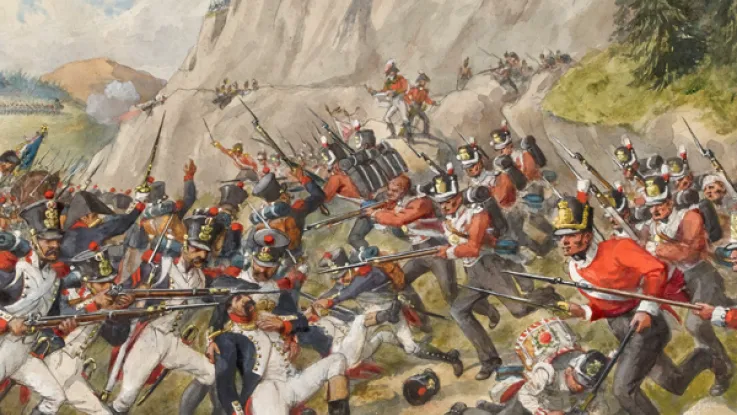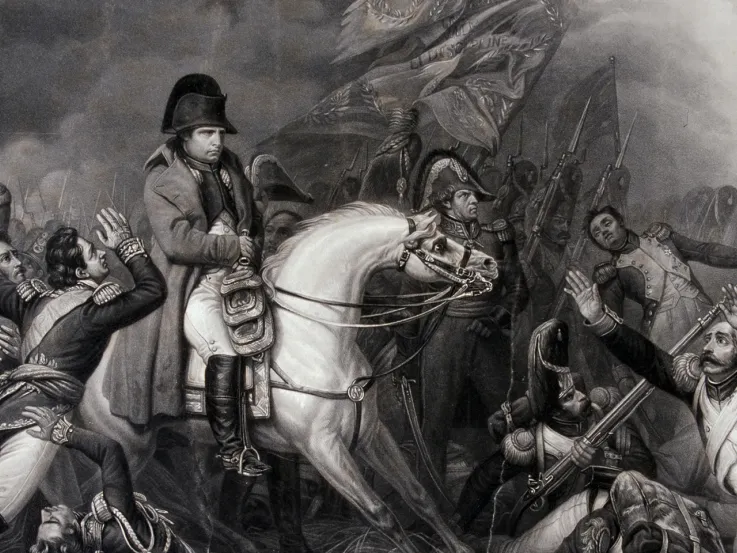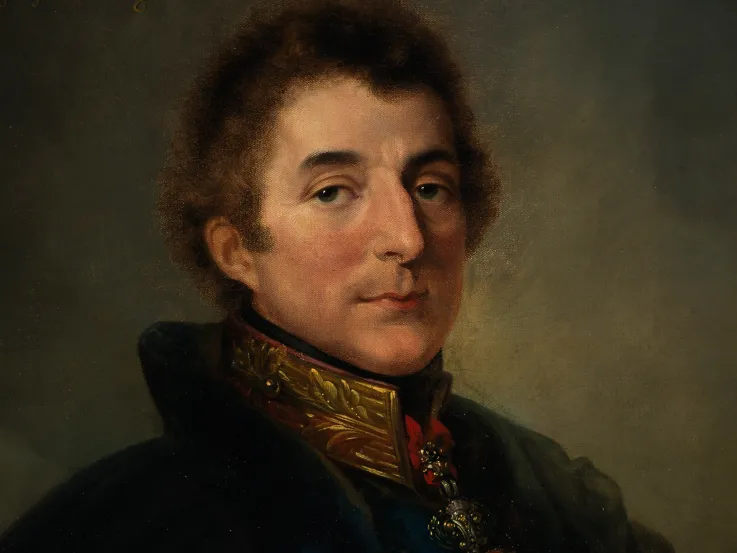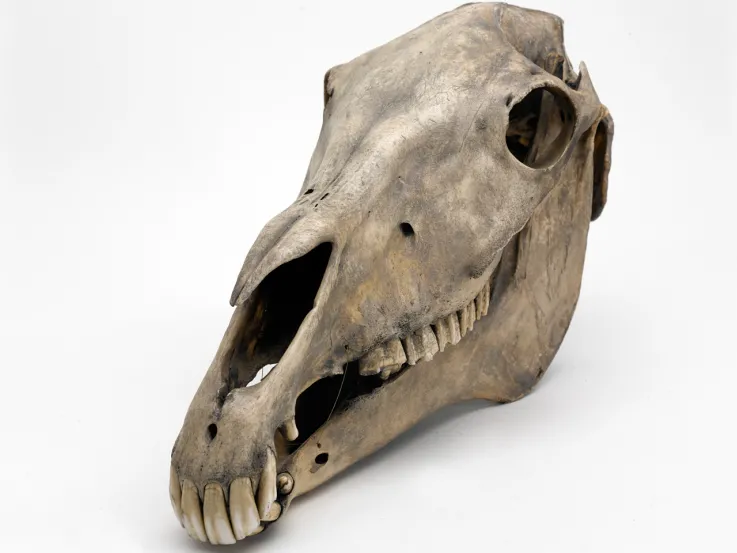Early career
Little is known about the early life of William Inglis. Born in Edinburgh in 1764, he joined the Army in 1779 as an ensign, the lowest officer rank.
In 1781, he travelled across the Atlantic to join the 57th Regiment of Foot at the height of the American War of Independence (1776-83). Following the British defeat there, Inglis withdrew to Nova Scotia with his regiment, where he would remain for the next 10 years. Further campaigns followed, including service in Britain, the Low Countries and the Caribbean.
Inglis was promoted to lieutenant-colonel in 1802, taking command of his battalion of the 57th Foot. He was praised for the morale and ability of his men, though he was known to refer to them as ‘fighting villains'.
Battle of Albuera
In 1809, Inglis and his soldiers sailed to Portugal with Sir Arthur Wellesley’s army for service in the Peninsular War against the invading forces of the First French Empire.
On 16 April 1811, they took part in the fighting at Albuera, across the border in western Spain, as part of a mixed force of Spanish, Portuguese and British soldiers led by Field Marshal Sir William Beresford.
During the battle, the British suffered a massive flanking attack by the French. Muskets and cannon were fired from short range, with the 57th suffering particularly severely.
Inglis himself was wounded early in the battle. Canister shot fired from a French cannon struck him near the neck and lodged in his back.
‘Die hard, 57th! Die hard!’Lieutenant-Colonel William Inglis at Albuera — 16 April 1811
‘Die hard!’
Inglis refused to be carried to the safety of the rear, and turned down medical attention. Instead, he lay beneath the Colours and encouraged his men from behind the ranks with the words, ‘Die hard, 57th! Die hard!’
Despite mounting casualties, the men held their ground. A British counter-attack eventually drove the French away, and the battle ended in an indecisive draw.
The resolve shown by the 57th Foot at Albuera was due in part to Inglis's leadership. The example he set, combined with his men’s bravery, earned them the nickname the ‘Die Hards’, a name that stayed with the regiment, despite subsequent amalgamations.
‘Nothing could exceed the conduct and gallantry of Colonel Inglis at the head of his regiment.’Field Marshal Sir William Beresford, allied commander at the Battle of Albuera — 1811
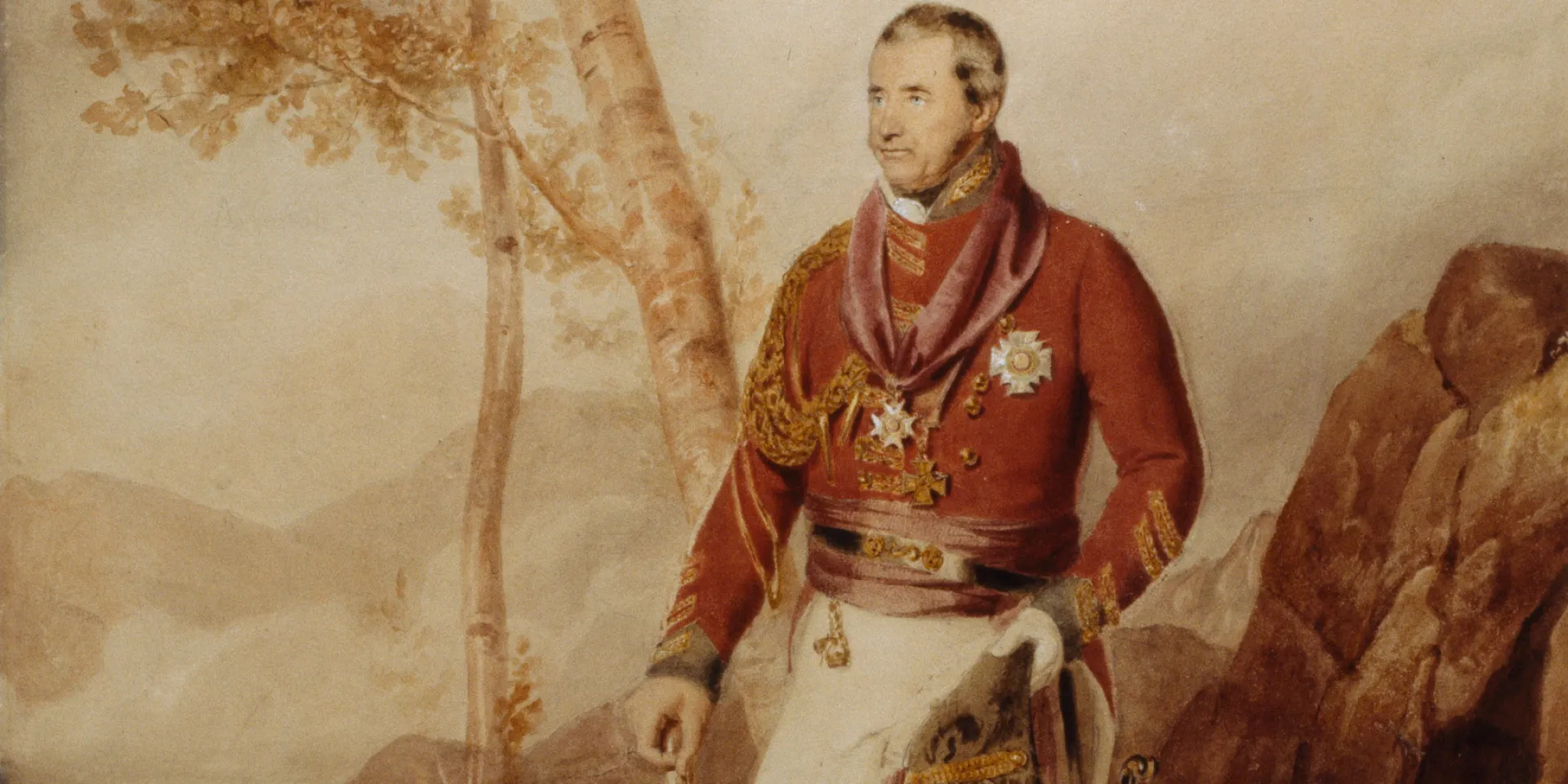
Major General Sir William Inglis, 1815
After Albuera
Inglis was so badly wounded that he had to return to Britain to recover. It would be two years before he returned to the Peninsula and took command again. In May 1813, he was promoted to brigadier-general, and then major-general.
At the Battle of the Pyrenees, in July-August 1813, he once again led his men from the front, storming a French position and having a horse shot from under him.
In November that year, he was wounded in the foot at the Battle of Nivelle. But he was still able to lead his men at the Battle at Orthes on 27 February 1814, where another horse was shot from under him.
Acclaim
Inglis retired shortly after the Peninsular War. Throughout his military career, he had shown tremendous leadership, putting himself in harm's way to encourage his men and sharing the dangers of combat with them.
He was awarded the Army Gold Medal for his service at Albuera, as well as the Army Gold Cross for the Peninsular War and the Army Gold Medal for the Pyrenees.
He also received civilian acclaim. His resolve at Albuera had been covered in the British press, and he was voted thanks by both Houses of Parliament and made a Knight Commander of the Order of the Bath on his return home after the war.
See it on display
You can see a miniature portrait of Sir William Inglis, as well as a selection of his medals, in our Conflict in Europe gallery. You'll find them displayed alongside other items that showcase the bravery and leadership skills of soldiers on campaign.







